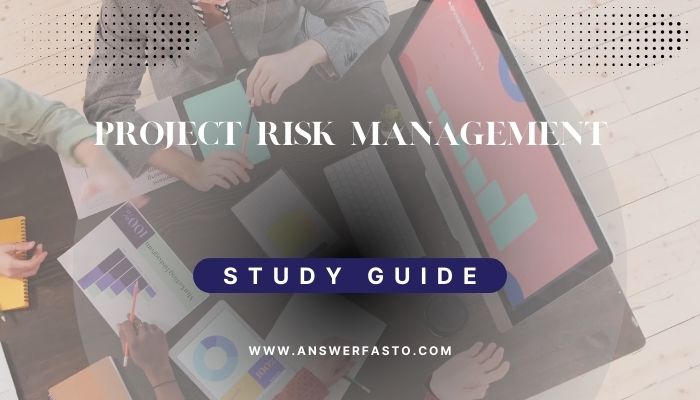Managing Project Risks—Advanced Techniques:
Quantitative Risk Analysis
1.Monte Carlo Simulation:
Using this technique one can run different simulations to arrive at a good estimate of what multiple possible project outcomes would be through given input variables, thereby ending up with a probabilistic view of risks.
Example: This approach measures the probability of completing a construction project on time by taking into account uncertainties regarding different contributory aspects such as weather changes, labor availability, and material delivery, and running several random permutations and iterations.
2. Sensitivity Analysis:
In sensitivity analysis, one can say which of the project variables has a vital impact on outcomes and through which projects actually can be prioritization of mitigation action.
Example: For an IT project, sensitivity analysis shows that delays in software development are likely to be value significant for the overall project timeline; therefore, it gives the basis for maximized effort to mitigate this important risk scenario.
Risk Response Planning
1. Contingency Reserve Analysis:
This stage sets a contingency reserve for risks identified so that there is always some resource if the risk happens.
Example: For example, if there is an unforeseen increase in marketing campaign costs due to market change, the contingency reserve is prepared.
2. Risk Transfer and Contracts:
Some risks can neither be avoided nor prevented; in such cases, they can be transferred through a contract or insured against another party.
Example: The risk of price decline in materials may be fixed as a contract price with the supplier; hence, the price fluctuation risk will be transferred to the supplier in the construction industry.
Risk Monitoring and Control
1. Earned Value Management (EVM):
Used for evaluating performance in a project, the EVM actually combines scope with schedule and cost data. It can further be complemented with the Risk-Adjusted Earned Value (RAEV) to accommodate risks in the monitoring of the projects.
Example: The project managers using RAEV would monitor the progress in the work done and also how well the actual development is handling the risks.
2. Advanced Reporting and Dashboards:
The Real-time dashboards and reports can display KPIs and risk metrics which can enable proactive risk management.
Example: A dashboard in a software development project can show important code quality metrics that can help projects bring quick solutions over the risks.
3. Resilience planning:
Plans on resilience explain how a project will adapt to and recover risks that become a reality to ensure business continuity.
Example: In the case of a supply chain project, the resilience plan may include backup suppliers and logistics routes so that the effect of disruption can be minimized.
4. Root cause Analysis:
The root cause analysis carried out once the risk has occurred gives its root causes with a view of preventing similar incidents in future projects.
Example: After a project has been delayed due to a key member leaving the team, a root cause analysis has found that inadequate knowledge transfer contributed to that delay.
Integrated Risk Management
1. Integrated Risk and Opportunity Management for Projects:
Both negative impacts and positive impacts need to be captured in project scope definition so that returns on investment across the project can be optimized.
Example: In a product development project, this opportunity translates into saving costs and faster delivery when it turns out a new and more efficient manufacturing process can be used.
2. Risk-based Decision Making:
The basis for the decision would be where the project profile speaks of the risks associated with a variety of risks on the project. Greatest impact decision-making should be conducted.
Example: When launching a new feature in a software project, the delay risk and technical challenges should be evaluated against increase margin from launching that feature.
Besides that, an integration of these advanced techniques into conventional project risk management processes permits project management uncertainty but educated decisions and maximization of outcomes for the ultimate success of the projects.



